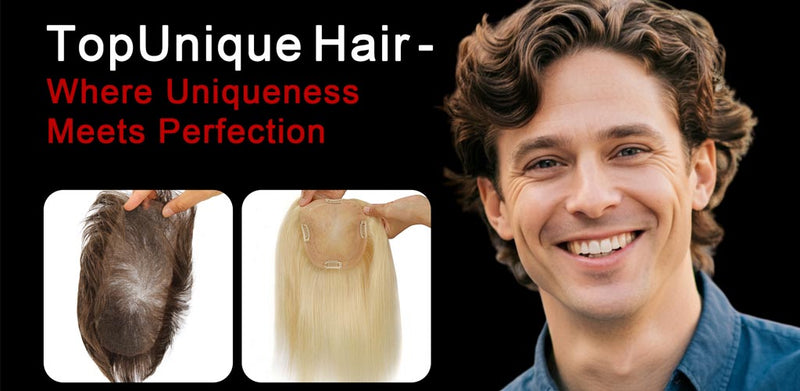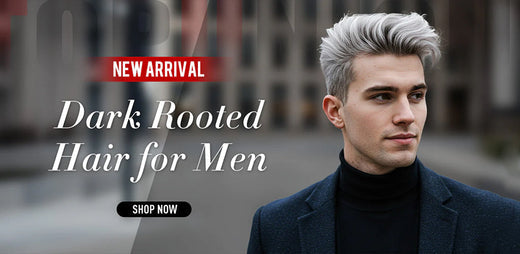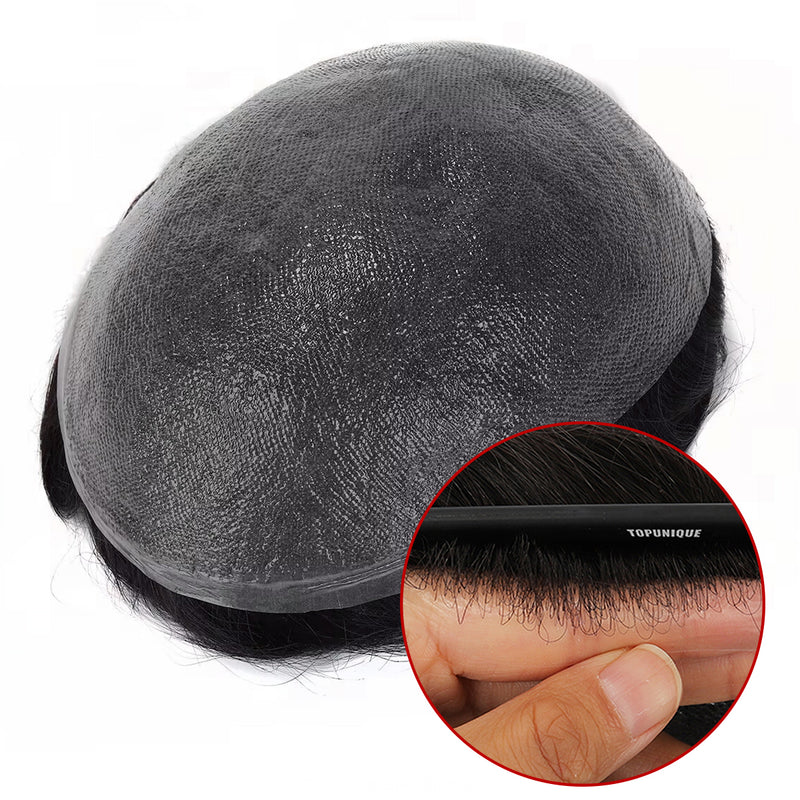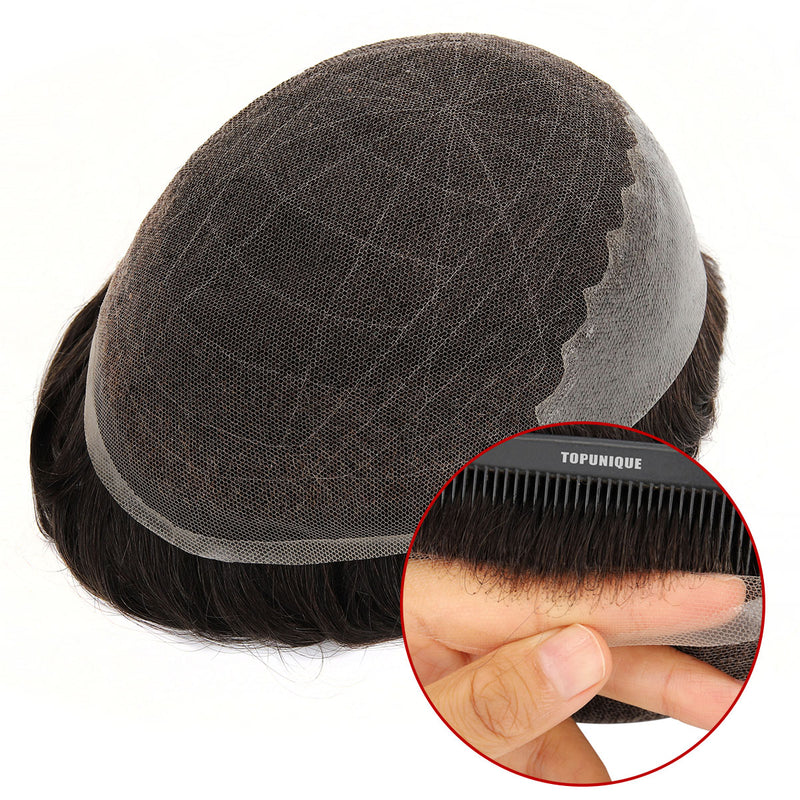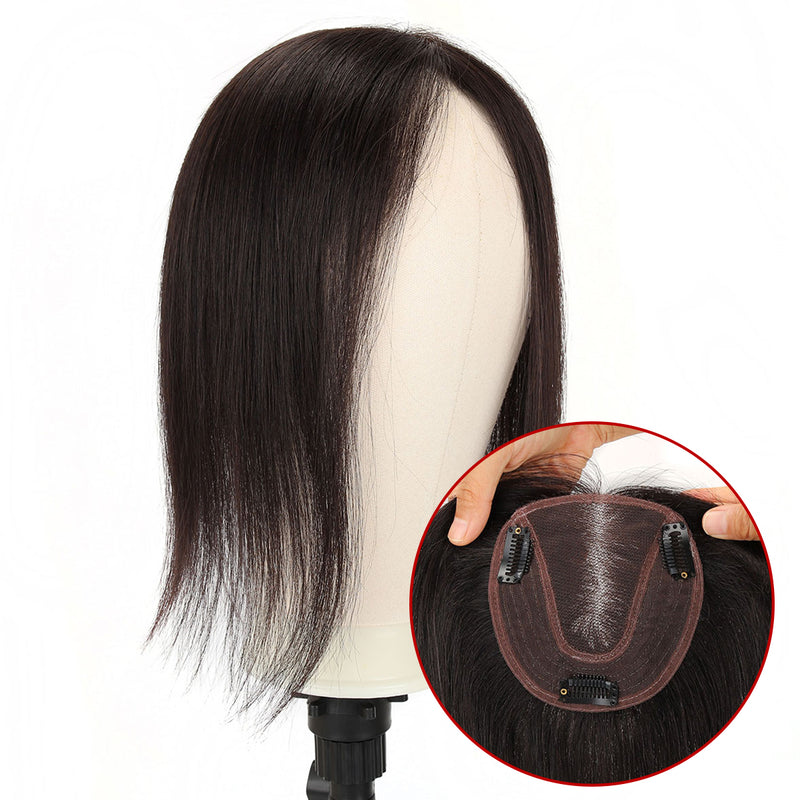Table of Contents

The difference between 1B hair color and 1 goes beyond just splitting hairs. Your final look depends heavily on understanding what makes 1 vs 1B hair color unique. Pure jet black without undertones defines 1 hair color. Meanwhile, 1B hair color shows off a more natural black shade that includes subtle brown undertones. 1B hair color stands out as the top pick for hair extensions and wigs because it matches natural-born dark hair perfectly. #1B hair color creates a natural look by mixing random gray and brown hairs throughout, while 1 keeps its dramatic, uniform black shade consistently. Let us help you pick the shade that matches your style goals better, whether you want a new hair color or are checking out extension options.
The Science Behind Black Hair Shades
The chemical makeup and light interaction patterns show how 1B hair color is different from #1. Natural pigment melanin gives hair color through its two forms where eumelanin produces dark effects and pheomelanin results in lighter tones. These pigments help us learn about why 1 vs 1B hair color looks so different, even though both are called "black."
How 1B Hair Color is Created

1B hair color, also known as off-black, uses a balanced formula that looks like natural black hair. This shade has warm brown undertones instead of pure black pigments, which creates a more natural, softer look. The creation process needs:
· Lower amounts of black eumelanin
· Small amounts of brown eumelanin for warmth
· Perfect balance of dye molecules that add dimension
Hair color experts at TopUnique Hair know that #1B hair color works because it has the same tiny variations found in natural hair. Bright light shows 1B hair color's subtle brown reflections instead of the blue-black shine you see in jet black. 1B hair color formulas also mix in slightly lighter strands with the dark base, just like natural black hair's multiple subtle tones.
How #1 Hair Color is Made

The darkest possible shade, jet black (#1), needs a completely different approach. True #1 hair requires:
· Highest levels of black eumelanin pigments
· Blue-toned pigments that add cool undertones
· More alkalinity that fully opens hair cuticles for deep color
The formula uses oxidative dyes with primary intermediates (para-phenylenediamine or similar compounds) and coupling agents in an alkaline environment. These ingredients react with hydrogen peroxide to make larger color molecules that sink deep into the hair shaft. The color needs specific chemicals like toluene-2,5-diamine to achieve jet-black.
Natural Black's Difference from Jet Black
Jet black (#1) color never matches natural black hair perfectly. Here's why:
1. Genetics determine how much eumelanin natural black hair has, which creates reflective qualities artificial colors can't copy exactly.
2. 1B hair color looks more like natural black hair because it has warm undertones that match natural melanin combinations.
3. The undertones make a big difference – natural black hair and #1B hair color look warmer and browner, while jet black looks cooler and bluer.
4. Light bounces off each type differently – 1B hair color lets some light through and reflects warmth, while jet black shows a blue-black shine in bright sunlight.
5. Natural black hair shows slight color changes throughout, unlike the solid color of jet black dye.
1 vs 1B hair color affects how well they match different skin tones. 1B hair color looks good on more people because its warm undertones complement natural coloring, but jet black can look too harsh on lighter skin. #1B hair color also makes extensions and wigs look more real because it matches unprocessed hair's natural dimension.
Professionals often choose 1B hair color to get the most natural look, especially when matching existing hair that has natural variations.
Real-World Applications of 1 vs 1B Hair Color

The difference between 1B hair color and #1 becomes much clearer in real-world use. These small variations we talked about really affect how the colors look in hair of all types. My daily work with different hair colors has shown me how these two black shades look quite different based on where they're used.
For Hair Extensions and Wigs
1B hair color is what most people pick for their extensions or wigs. People love it because it looks natural and blends easily with most natural black hair. #1B hair color gives a more realistic look than the intense #1, thanks to its subtle brown undertones that match natural hair variations.
TopUnique Hair makes high-quality hairpieces and uses 1B hair color options because they look so natural. You can really see the 1 vs 1B hair color difference in natural light. Pure black (#1) extensions can look too dark against natural hair, but #1B hair color catches the light just like real hair does.
For Full Hair Coloring
The 1 vs 1B hair color choice makes a big difference in full color treatments. Here's what clients should know:
· 1B hair color frames the face softly and looks great on lighter skin tones
· #1 creates bold contrast and makes a strong statement
· #1B hair color fades nicely into a dark brown
· #1 might turn bluish as it fades
Most colorists suggest 1B hair color to clients who want natural-looking black hair, especially if they're going dark for the first time.
For Highlights and Lowlights
The 1 vs 1B hair color shows its true value in dimensional coloring. Colorists need to think about how each shade works with other colors.
#1B hair color makes a perfect lowlight in brunette hair. It adds depth without harsh lines. Jet black can create stronger dimension but needs careful placement to avoid stripes. 1B hair color mixes better with warm-toned hair, while #1 might stand out too much.
#1B hair color also gives you more styling options. It changes slightly under different lights, which adds natural depth that you just can't get with flat black.
How Different Hair Types Display Black Shades
Your hair's physical traits play a huge role in how 1B hair color and #1 look after application. Each hair texture, curl pattern, and thickness level creates unique visual effects that can make or break your desired look.
Straight Hair: 1B Hair Color vs 1 Appearance
Straight hair serves as a perfect canvas to showcase the difference between 1 vs 1B hair color. #1B hair color reveals its subtle brown undertones more clearly on straight strands, especially in natural light. Light reflects more off straight hair, which makes 1B hair color's warmer aspects stand out compared to curly textures. Jet black (#1) looks incredibly uniform and intense on straight hair, though it might seem a bit unnatural.
#1B hair color works really well with Type 1B straight hair (hair with slight waves). This combination creates a natural look with subtle dimension. TopUniqueHair.com experts point out that 1B hair color makes straight hair look sleeker and shinier because the smooth cuticle reflects light better than the stark #1 shade.
Curly and Coily Hair: How Black Shades Look
Black shades appear quite differently on curly and coily hair textures. #1B hair color creates natural dimension on curly hair as light hits various parts of the curl pattern. The texture scatters light naturally, giving 1B hair color a rich, multi-tonal appearance. Coily hair needs more product because it absorbs color more deeply.
The differences between 1 vs 1B hair color become subtle at first glance on Type 4 coily textures but create distinct overall effects. Jet black can overpower coily patterns, while #1B hair color brings out natural definition. 1B hair color adds more depth to curly hair by highlighting natural texture variations.
Fine vs Thick Hair Considerations
Hair thickness affects black shades in several ways:
· Fine hair quickly absorbs #1B hair color but might reveal more scalp, making jet black look harsh or unbalanced
· Medium thickness hair absorbs 1B hair color evenly and holds color longer
· Thick, coarse hair shows amazing depth with #1B hair color but needs more processing time
Fine straight hair might look flat with #1 but gains dimension with 1B hair color. Thick hair displays both shades beautifully but shows #1B hair color's brown tones less obviously except in direct sunlight. Whatever your hair thickness, 1 vs 1B hair color needs similar maintenance, though fine hair shows fading earlier.
Styling Options That Enhance Each Shade
The right hairstyle can bring out unique qualities in both 1B hair color and jet black, each showing its own character. Smart styling techniques can show off the warm undertones of #1B hair color or the bold impact of #1 shades. These choices create completely different looks.
Hairstyles That Showcase #1B Hair Color
1B hair color runs on styles that show depth and movement. Beachy waves and loose curls make the subtle brown undertones in #1B hair color pop. Light catches different parts of the hair and creates a multi-layered effect. This natural-looking black works great with textured styles that might seem too intense with jet black.
1B hair color looks amazing in these straight hair styles:
· Layered cuts that play with shadow and light
· Side-swept looks that show off natural shine
· Half-up/half-down styles that display texture changes
1B hair color really shines in styles that need dimension. Braided hairstyles improve the texture of #1B hair color naturally. The style stays manageable and fashionable. Curtain bangs with #1B hair color create a beautiful frame that softens facial features without the intensity of darker shades.
Looks That Highlight Jet Black's Intensity
Jet black hair just needs different styling approaches than 1B hair color. Sleek straight styles make the most of the mirror-like shine unique to #1 hair color. The difference between #1 and 1B hair color becomes clear in high-shine styles - jet black creates dramatic reflections that #1B hair color can't match.
Jet black hair creates stunning results with:
· Slicked-back styles that show off its solid color
· Sharp bob cuts with clean lines
· High-contrast color additions like bright highlights or tips
Bright color placement techniques work beautifully with jet black hair. The stark contrast between jet black and vibrant colors creates eye-catching effects you can't achieve with softer #1B hair color. Jet black's intensity provides the perfect canvas especially when you have experimental styles and avant-garde approaches in mind.
TopUniqueHair.com, a leading hair system company, suggests 1B hair color to clients who want versatile styling options with a natural look. They save #1 for clients seeking dramatic, high-contrast styles.
Making the Switch Between Shades
The choice between 1B hair color and #1 goes beyond personal preference. You need to understand the chemical processes and results you can expect. TopUniqueHair.com, a leading hair system company, gets more requests from people who want to learn about switching between these similar black shades.
Going from 1B Hair Color to #1: What to Expect
The process of darkening 1B hair color to jet black (#1) doesn't take much work. Note that this change needs less processing because you're moving to a deeper shade. The application of #1 over #1B hair color gives you a more intense, uniform look with cooler undertones. Your hair loses those warm brown undertones that are typical of 1B hair color and takes on a more dramatic appearance.
The 1 vs 1B hair color differences become clear after you apply the color. The #1 looks substantially more intense whether you're in sunlight or indoor lighting. Some clients find this intensity too much for their skin tone after a while.
Transitioning from #1 to 1B Hair Color
The shift from jet black to 1B hair color isn't as simple. You'll need to remove the color first before lightening black hair. Here's what the process looks like:
6. Use color-safe clarifying or dandruff shampoo to fade existing color slowly
7. Apply color remover made specifically for black dye
8. Use conditioning treatments between steps to keep hair healthy
Once you've removed the color, you can apply #1B hair color to get that natural-looking black shade. The warm undertones that make 1B hair color special might take several sessions to achieve, especially if you've used #1 multiple times.
Color Correction Techniques
Hair color experts use several methods to fix 1 vs 1B hair color issues:
· Vitamin C mixed with shampoo helps lift black pigment gradually
· Pre-toning with ash or neutral formulas neutralizes unwanted warmth
· Malibu CPR treatments clear out mineral buildup from old color before new applications
Understanding the underlying pigments is vital to color correction between these shades. When jet black won't completely fade, colorists often use #1B hair color with specific toners. This creates the illusion of natural black even with some #1 pigment left. Multiple gentle sessions work better than one aggressive treatment to protect your hair's health.
Conclusion
The difference between 1B hair color and #1 makes choosing the right shade much easier. Our detailed comparison shows that #1B hair color proves to be more versatile and natural-looking. Jet black creates dramatic statements, while 1B hair color adds subtle warmth that enhances various skin tones and hair textures.
#1B hair color emerges as the preferred choice for most applications, especially with realistic-looking hair systems or extensions. Both shades serve different purposes, but 1B hair color delivers that coveted natural appearance clients want. TopUniqueHair.com's professional stylists recommend #1B hair color because it blends naturally with natural hair variations and keeps its appeal in different lighting conditions.
In the end, your choice between 1 vs 1B hair color depends on your style goals. You might prefer jet black for dramatic, high-contrast looks, while 1B hair color works better for natural-looking results. Need help deciding which shade suits you best? Talk to TopUnique Hair's experts at 1-833-785-5654 for immediate assistance. The right shade can transform your look when you select hair systems, extensions, or plan a color change.

